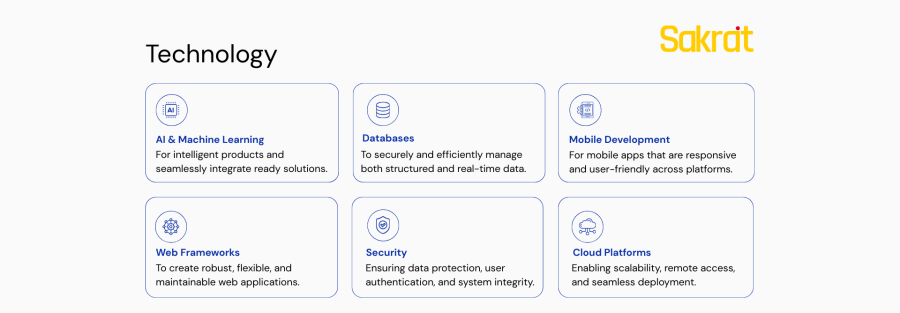As a leader, you’re constantly scanning the horizon for the next big shift. You’ve navigated cloud adoption, mobile-first strategies, and the rise of big data. Now, a new transformation is not just approaching, it’s here. It’s called agentic AI, and it represents one of the fastest technological shifts since the public cloud.
Gartner predicts that by 2026, a staggering 40% of enterprise applications will feature task-specific AI agents, a monumental leap from less than 5% today. This isn’t just an upgrade; it’s a fundamental change in how work gets done. For CEOs, this isn’t a topic for the IT department to handle alone; it’s a strategic imperative that demands top-down leadership.
What Is Agentic AI (And Why Is It Different)?
Think of your current software as a set of sophisticated tools. They require a person to pick them up, provide instructions, and manage the process. Agentic AI is different. It’s not a tool; it’s a digital worker.
Agentic AI systems are autonomous agents capable of proactively making decisions, executing complex multi-step tasks, and learning from outcomes with minimal human intervention. While traditional AI reacts to prompts, agentic AI actively pursues strategic goals, from optimizing a supply chain to negotiating with suppliers.
From Buzzword to Bottom Line: Tangible Benefits of Agentic AI
Adopting agentic AI isn’t about chasing trends; it’s about driving measurable results and building a resilient, future-proof organization.
- Hyper-Efficiency and Cost Reduction: Agentic AI automates entire workflows, not just tasks. For example, Omega Healthcare automated its medical billing and claims processing, saving over 15,000 employee hours per month and achieving 99.5% accuracy. This frees up your human talent to focus on high-value strategic initiatives.
- Enhanced Decision-Making: These autonomous agents can analyze vast, complex datasets to provide reliable insights, significantly reducing decision-related errors. In industries like manufacturing, this can mean proactively identifying equipment failure points before they lead to costly downtime or safety incidents.
- Accelerated Innovation: By autonomously experimenting and iterating, agentic AI can drastically speed up innovation cycles. Imagine AI agents testing thousands of variables in drug discovery or product design, accomplishing in days what used to take months.
- Scalability on Autopilot: Agentic systems can adapt to increasing workloads without requiring a proportional increase in human oversight. This allows your organization to scale operations more efficiently and agilely than ever before.
The CEO’s Action Plan: How to Lead the Agentic AI Revolution
Gartner analysts warn that CIOs have only a few months to define an AI agent strategy before risking significant ground to competitors. As CEO, your leadership is crucial. Here is a four-step plan to get started.
1. Address the Data Quality Imperative
The adage “garbage in, garbage out” has never been more critical. An astounding 87% of AI projects never make it to production, with poor data quality being the single largest contributor to failure. Before you can leverage agentic AI, you must ensure your data is clean, harmonized, and accessible. Your first move should be to champion a data-first culture.
2. Identify High-Impact Use Cases
Instead of a broad, undefined AI initiative, target specific, high-value areas of the business. Based on current trends, prime candidates include :
- Supply Chain and Procurement: Autonomous agents can monitor market conditions, flag supplier risks, and even negotiate contracts.
- Enterprise Asset Management (EAM): In asset-heavy industries, AI agents can predict maintenance needs, order parts, and dispatch technicians automatically, preventing costly failures.
- Customer Service: AI-powered systems can manage end-to-end customer interactions, resolving complex issues without human hand-off.
- Finance and Healthcare: Agentic AI is already automating medical billing, insurance claims, and fraud detection with high accuracy.
3. Establish Robust Governance from the Top
The autonomy of agentic AI is its greatest strength, but it also presents risks. As a leader, you must address the concerns of your entire C-suite :
- For the CISO: How do we ensure security and prevent an AI agent from making a catastrophic error?
- For the CFO: How do we measure ROI and avoid “agent washing” vendors who simply rebrand old automation as new AI?
- For the COO: How do we integrate these agents without disrupting operations?
Your strategy must include clear governance, explainable AI (XAI) principles, bias mitigation protocols, and human oversight to ensure transparency and trust.
4. Build a Strategy, Start with a Pilot
Develop a clear, enterprise-wide strategy for AI agent adoption. Begin with a well-defined pilot project that has a clear business case and measurable KPIs. Early adopters like Amazon and Infosys are already deploying specialized AI agents to accelerate their clients’ AI journeys and enhance internal robotics. A successful pilot will build momentum and provide invaluable lessons for a broader rollout.
Looking Ahead: The Dawn of Multi-Agent Ecosystems
The current phase of task-specific agents is just the beginning. By 2029, the next evolution will be multi-agent ecosystems, where specialized AI agents collaborate to manage highly complex business processes. Imagine a team of agents one for research, one for data analysis, one for logistics working together seamlessly to launch a new product.
The shift to agentic AI is not a distant future; it’s a present-day reality. Organizations that act decisively will gain a significant competitive advantage in speed, efficiency, and innovation. The question is no longer if you should adopt this technology, but how quickly and effectively you can lead the charge.


